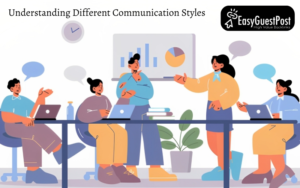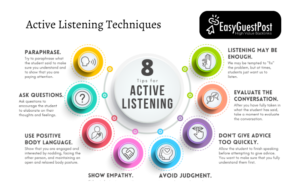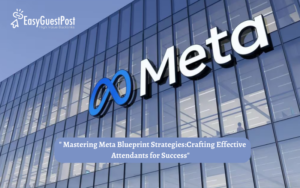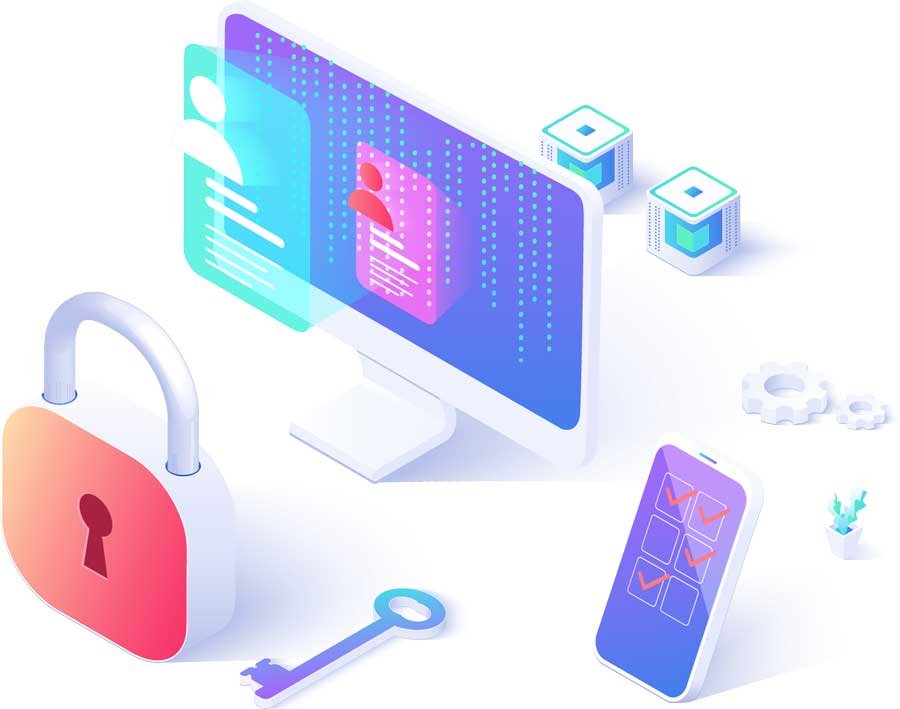” The Art of Effective Communication: Strategies for Every Setting”
Effective communication is an essential skill for any successful professional. Whether in the plant, a client service setting, or a social setting, the capability to express yourself and understand what others are communicating is crucial.
In this blog post, we’ll explore colourful strategies for effective communication in any setting.We will look at how to maximise the impact of your communication, manage delicate exchanges, and make strong connections. So read on to learn further about the art of effective communication!
1.Why Effective Communication is Important

Effective communication is pivotal in every aspect of life, whether it’s particular or professional. It’s the foundation of successful connections, both at work and in our particular lives. When communication is effective, it creates a positive and productive terrain where people feel valued and understood.
In the plant, effective communication is essential for collaboration and cooperation. It allows platoon members to understand their places and liabilities, share ideas, and work together towards common pretensions. Clear and terse communication ensures that everyone is on the same runner, minimises misconstructions, and prevents crimes or detainments.
Effective communication is also vital in client service settings. It allows you to understand guests’ requirements, address their enterprises, and give satisfactory results. When guests feel heard and understood, they’re more likely to trust your brand and come to pious guests. In particular connections, effective communication fosters closeness, trust, and understanding.
It enables individuals to express their passions, resolve conflicts, and make strong connections with others. Also, effective communication plays a significant part in decision- timber. When information is communicated easily and directly, it helps in making informed choices and avoids expensive miscalculations.
Overall, effective communication is essential for success in all aspects of life. It enhances connections, boosts productivity, and creates a positive and inclusive terrain. By honing our communication chops, we can introduce more professionals, musketeers, and mates.
2.Understanding Different Communication Styles
 In order to effectively communicate with others, it’s important to note that not everyone communicates in the same way. Different individualities have different communication styles, which can impact how they express themselves and how they interpret information.
In order to effectively communicate with others, it’s important to note that not everyone communicates in the same way. Different individualities have different communication styles, which can impact how they express themselves and how they interpret information.
By understanding and conforming to these different communication styles, we can ameliorate our capability to connect and engage with others. One common communication style is assertive communication. Assertive individuals are confident and clear in expressing their studies and passions, while also being regardful of others.
They prioritise their requirements and opinions while still considering the requirements of others. On the other hand, unresistant communication involves individualities who tend to avoid battle and frequently fail to express their own studies and passions.
They may struggle with setting boundaries and may allow others to dominate exchanges. Incipiently, aggressive communication is characterised by individualities who are forceful and dominating in their communication. They prioritise their own requirements and opinions at the expenditure of others, frequently leading to conflict and pressure.
Understanding these different communication styles can help us acclimatise our own communication style to more match the requirements and preferences of others. By using assertive communication as an effective and balanced approach, we can strive to be more assertive in our own communication. This involves expressing ourselves easily, harkening laboriously, and esteeming the perspectives of others.
Also, understanding unresistant communication can help us be more aware of individualities who may struggle with fierceness. By encouraging open dialogue, furnishing a safe space for expression, and promoting active listening, we can help unresistant individuals feel more comfortable in communicating their studies and passions.
Incipiently, understanding aggressive communication allows us to respond in a formative manner when faced with aggressive agents. By remaining calm, asserting our own boundaries, and chancing common ground, we can alleviate conflicts and foster healthier communication dynamics.
By feting and understanding different communication styles, we can cultivate further effective communication practices and enhance our connections with others. It’s important to flash back that communication is a two- way road, and conforming our approach to match the requirements and preferences of others can go a long way in creating meaningful connections.
3.Active Listening Techniques

Active listening is a vital element of effective communication. It involves fully engaging with the speaker, not only hearing their words but also understanding their communication, passions, and intentions. By rehearsing active listening, we can make stronger connections, enhance understanding, and improve the overall quality of our exchanges.
One crucial fashion for active listening is maintaining eye contact. When we look directly at the speaker, it shows that we are attentive and interested in what they have to say. It also helps us pick up on verbal cues and better understand their passions and body language. Another important fashion is restating or encapsulating what the speaker has said.
This allows us to confirm our understanding and shows the speaker that we are laboriously listening and recovering their communication. By restating their words in our own words, we demonstrate that we are engaged and concentrated on their perspective.
Reflecting heartstrings is another active listening fashion. It involves feting and admitting the speaker’s passions, indeed if they are not explicitly expressed. By reflecting their heartstrings back to them, we show empathy and validate their experience.
Silence is also an important tool in active listening. Allowing pauses in the discussion gives the speaker the occasion to gather their studies and express themselves fully. It also shows respect for their words and allows for deeper reflection and understanding.
By incorporating these active harkening ways into our exchanges, we can demonstrate our genuine interest and understanding, produce a safe and supportive terrain, and ultimately enhance the effectiveness of our communication.
4.Overcoming Barriers to Communication

Communication can be hindered by various walls that can make it challenging to understand and be understood. These walls can do at any stage of the communication process and can be told by factors analogous as cultural differences, language walls, and particular impulses. prostrating these walls is vital to icing effective communication in any setting.
One common barricade to communication is a lack of clarity. When information is not conveyed fluently and curtly, it can lead to misinterpretations and confusion. To overcome this barricade, it’s important to use simple and direct language, avoid shoptalk or technical terms, and give specific samples or explanations when demanded. Another barricade is distractions and noise.
External distractions analogous as background noise, interruptions, or a chaotic terrain can make it delicate to concentrate on the discussion and fully comprehend the communication. Internal distractions analogous as particular impulses, preconceived sundries, or emotional countries can also hinder effective communication.
To overcome these walls, it’s important to produce a conducive terrain for communication, minimise distractions, and laboriously listen to the speaker. Cultural and language walls can also pose challenges in communication. Differences in-verbal cues, and communication morals can lead to misinterpretations or misinterpretations.
To overcome these walls, it’s important to be alive of cultural differences, be patient and dutiful when communicating with individuals from different societies, and seek explanation when necessary. particular impulses and hypotheticals can also impede effective communication.
When we approach a discussion with preconceived sundries or judgments, it can hinder our capability to truly hear and understand the other person’s perspective. To overcome this barricade, it’s important to be open-inclined, suspend judgement, and laboriously seek to understand the other person’s point of view.
prostrating walls to communication requires tone- awareness, empathy, and amenability to adapt our communication style. By laboriously addressing these walls, we can enhance our capability to connect, understand, and be understood in any setting.
5.Giving and Receiving Feedback

Giving and Receiving Feedback is a vital aspect of effective communication. It allows us to give precious input, fete achievements, and address areas for improvement. Whether in the factory, particular connections, or any other setting, feedback plays a vital part in growth and development.
When giving feedback, it’s important to be specific and constructive. Focus on the behaviour or performance, rather than attacking the person. Start with positive feedback to make fellowship and also give specific samples and suggestions for improvement. Use clear and concise language to ensure your communication is understood.
Active listening is equally important when entering feedback. Remain open-inclined and open to the feedback, indeed if it may be delicate to hear. Avoid Getting protective or dismissive. rather, ask clarifying questions to completely understand the feedback and demonstrate your commitment to growth and enhancement.
Creating a safe and probative terrain is crucial to effective feedback exchange. ensure that feedback is given in private, esteeming the existent’s sequestration and quality. Use a cooperative approach, encouraging dialogue and input from both parties.
This fosters trust and openness, making it more likely that the feedback will be well- entered and acted upon. Flash back, feedback is a two- way road. Be open to entering feedback from others and give openings for them to partake in their studies and suggestions. By laboriously seeking and valuing feedback, we can continuously ameliorate our communication chops and strengthen our connections.
Conclusion:
By understanding and conforming to these different communication styles, we can improve our capability to connect and engage with others. Understanding these different communication styles can help us acclimatise our own communication style to further match the conditions and preferences of others. It’s important to flash back that communication is a two- way road, and conforming our approach to match the conditions and preferences of others can go a long way in creating meaningful connections.
This allows us to confirm our understanding and shows the speaker that we’re laboriously harkening and recovering their communication. To overcome these walls, it’s important to produce a conducive terrain for communication, minimise distractions, and laboriously listen to the speaker.
Also Read: ” Content Marketing Mastery: Strategies for Digital Success”
Also Read: Unraveling the Magic of AI Exploring ChatGPT’s Implicit





